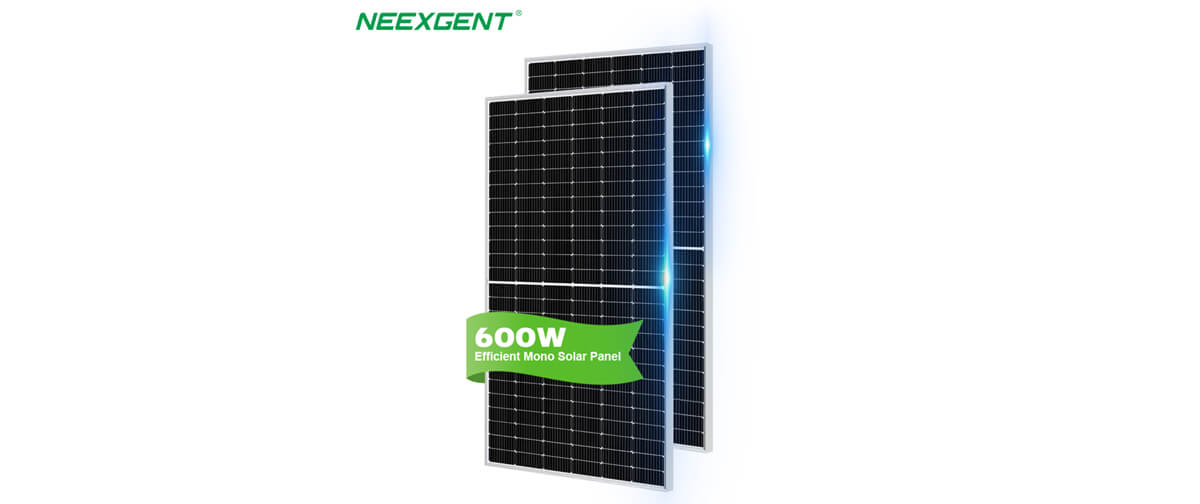The history of solar panels spans several decades, with significant advancements and breakthroughs in harnessing the power of the sun. From humble beginnings to a rapidly growing industry, solar panels have transformed the way we generate and consume electricity. This essay delves into the evolution of solar panels, highlighting key milestones, technological advancements, and their profound impact on renewable energy and sustainable development.

Half cut monocrystalline silicon solar panels
1. Early Exploration:
The concept of harnessing solar energy dates back to ancient civilizations, who used magnifying glasses and mirrors to focus sunlight for various purposes. However, it was not until the 19th century that scientists began experimenting with photovoltaic effects. In 1839, Alexandre-Edmond Becquerel discovered the photovoltaic effect, laying the groundwork for future solar technologies.
2. The Birth of Photovoltaics:
The true birth of solar panels came in 1954 when researchers at Bell Laboratories, led by Daryl Chapin, Calvin Fuller, and Gerald Pearson, developed the first practical silicon photovoltaic cell. This revolutionary discovery marked the first commercially viable solar cell, capable of converting sunlight into electricity. The Bell Solar Battery, as it was known, achieved a 4% energy conversion efficiency.
3. Space Exploration and Solar Revolution:
During the space race of the 1950s and 1960s, solar panels gained prominence as a vital power source for satellites and spacecraft. The Vanguard I satellite, launched in 1958, featured small photovoltaic cells. Subsequently, solar panels were extensively used in various space missions, including the Apollo program. These space applications drove further research and technological advancements, leading to improved solar cell efficiency and durability.

Monocrystalline silicon solar panels
3. Expansion and Widespread Adoption:
As solar technology matured, it gradually found applications beyond space missions. In the 1970s, advancements in silicon processing techniques and increased energy demands prompted the use of solar panels in remote areas where grid access was limited. Governments and organizations began investing in solar energy research and development, aiming to diversify energy sources and reduce dependence on fossil fuels.
4. Efficiency Improvements and Cost Reductions:
Throughout the 1980s and 1990s, ongoing research and development efforts focused on enhancing solar cell efficiency and reducing manufacturing costs. New materials and fabrication methods were explored, leading to the emergence of thin-film solar cells, which offered flexibility and potential cost advantages. These innovations helped pave the way for broader adoption of solar panels in residential, commercial, and utility-scale applications.
5. Growth and Global Transition:
The early 21st century witnessed exponential growth in the solar energy sector. Technological advancements, government incentives, and increased environmental awareness led to a surge in solar installations worldwide. The cost of solar panels continued to decline, aided by economies of scale, streamlined manufacturing processes, and improvements in efficiency. The industry experienced a significant transformation, with solar energy becoming a mainstream source of power generation.

All black HJT solar panel
6. The Rise of Photovoltaic Innovations:
In recent years, research and development efforts have focused on pushing the boundaries of solar panel efficiency and exploring novel technologies. Concepts such as multi-junction solar cells, perovskite solar cells, and organic photovoltaics have shown promising potential in achieving higher efficiencies and expanding the applications of solar energy. Additionally, energy storage systems, such as lithium-ion batteries, have complemented solar panels, enabling round-the-clock power availability.
The history of solar panels reflects an inspiring journey of innovation and perseverance. From their humble beginnings to widespread adoption, solar panels have transformed the energy landscape, offering a sustainable and renewable alternative to traditional fossil fuel-based power generation. As we continue to address the challenges of climate change and sustainable development, solar panels remain at the forefront, driving the transition towards a clean energy future. With their ever-increasing efficiency and decreasing costs, solar panels have become an economically viable and environmentally friendly solution for generating electricity.
The impact of solar panels extends beyond energy generation. They have contributed to job creation, fostering a booming solar industry that employs millions of people worldwide. Solar installations have also provided economic benefits by reducing dependence on imported fossil fuels and enhancing energy security for many nations.
Moreover, solar panels have had a positive environmental impact. By harnessing the power of the sun, they produce clean energy without emitting harmful greenhouse gases or other pollutants. This helps mitigate climate change and reduces the reliance on finite resources, such as coal, oil, and natural gas.

Portable soft solar panels
The advancements in solar panel technology have also made them more accessible and versatile. Today, solar panels can be found on rooftops of homes, commercial buildings, and even integrated into portable devices like smartphones and backpacks. Solar-powered street lights, water pumps, and off-grid systems have provided electricity to remote and underprivileged areas, improving the quality of life for countless communities.
Government support and incentives, such as feed-in tariffs and tax credits, have played a crucial role in the widespread adoption of solar panels. These initiatives have encouraged individuals, businesses, and utilities to invest in solar installations, further driving down costs and spurring technological innovation.
However, challenges still exist. The intermittent nature of sunlight necessitates the development of efficient energy storage solutions to ensure a continuous power supply. Additionally, the integration of solar panels into existing energy grids requires careful planning and infrastructure upgrades.
Despite these challenges, the history of solar panels provides an optimistic outlook for the future. As technology continues to advance, we can expect further improvements in efficiency, durability, and cost-effectiveness. Continued research and innovation will pave the way for breakthroughs in energy storage, allowing solar energy to become a reliable and consistent source of power.
The history of solar panels is a testament to human ingenuity and the quest for sustainable energy sources. From their early beginnings as laboratory experiments to their current widespread adoption, solar panels have revolutionized the energy sector. They offer a clean, renewable, and abundant source of electricity that holds the key to a more sustainable and environmentally conscious future. By harnessing the power of the sun, solar panels have the potential to address the challenges of climate change, promote energy independence, and create a greener world for generations to come.







